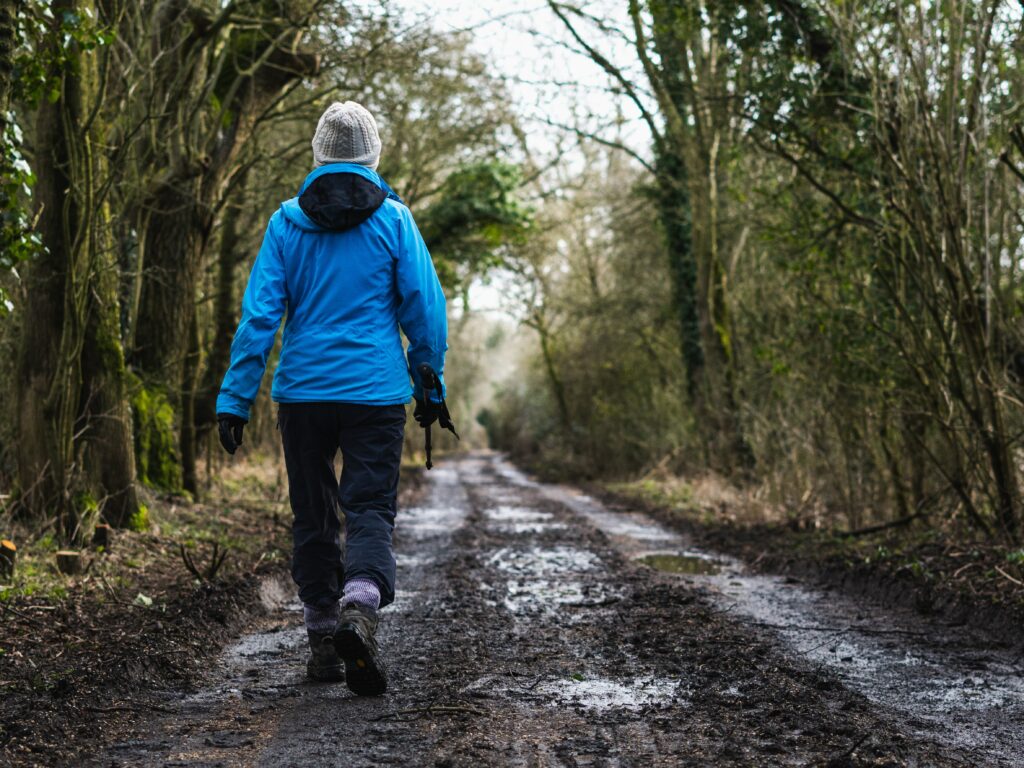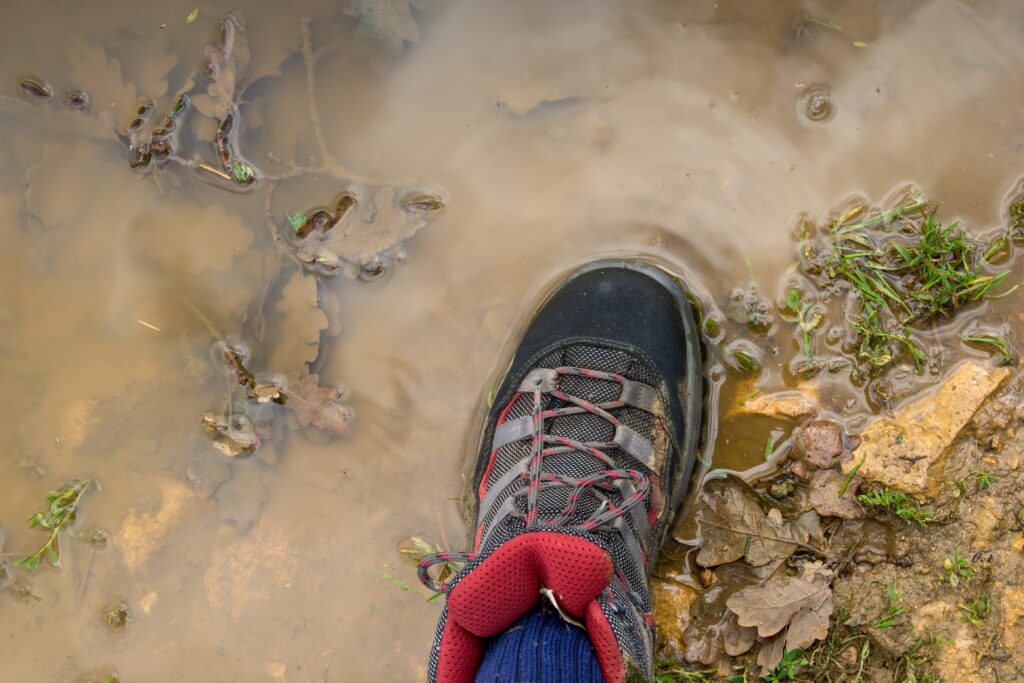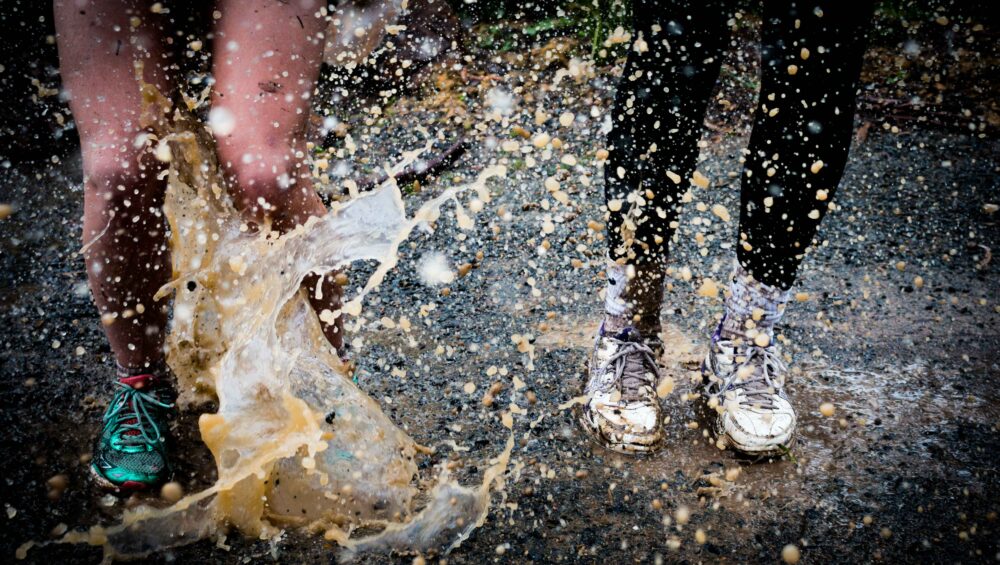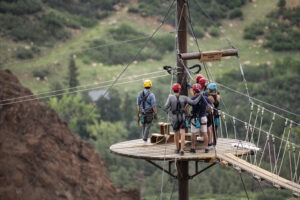Spring hiking in Colorado Springs, or just about anywhere in Colorado, is synonymous with mud hiking. Many of us ask the question, can you hike in the mud? The answer is a resounding yes, but there are a lot of particular tips for hiking in the mud that comes in handy to help any user get the most out of their time on the trail.
Just because the trails are muddy doesn’t mean you have to stay at home and settle into couch life. Getting out is entirely possible! Learning how to manage mud season takes some adjustment time, but it gives you a whole new world of places to hike in the springtime. Mud season isn’t going to stop showing up, so it’s time to adapt.

Pick the right trail
The best move for hiking in the mud is to do a hefty amount of research and preparation. Some trails will stay wamps throughout mud season, and others may be in better condition than others. If you pick the right trail, you may not even encounter much mud on the hike.
To pick the right trail, head online and look into certain trail conditions. Some trails will be better positioned to drain quicker or dry out faster from the sun. South-facing trails, for example, get a huge amount of sun and will be much more likely to provide a solid, less muddy, trail surface.
The internet is another great resource for discovering trail conditions in the spring. Many hikers head out and report back to different social media groups, where they will describe what the trail looks like throughout the season. You’ll likely find others have gone out and checked before you have even considered going out, so use the information they’ve provided to save yourself some time.
Head out early
As the temperatures rise, ice turns to mud. If you can, getting out on the trails earlier in the morning means that the mud is likely to be a bit more firm and stable to hike on. Further on in the day, you’ll find yourself trekking through deeper and softer mud.
Heading out early also gives you a jump on the crowds of people that are all trying to get outside after a long winter. Trails tend to deteriorate throughout the day as use increases. If you get out early, you’ll find the trail in the most pristine condition that it will be on that day.
Choose to get muddy
One of the best, but hardest to follow, tips for hiking in mud is to “make the trail deeper, not wider.” This concept generally means hiking straight through the mud rather than trying to walk around it off of the trail. While this is best for the trail, it’s hard to commit to getting yourself covered in mud that can often come up and over your boots.
Taking care of trails often means not putting yourself first. In mud season, it means accepting the mud and owning it. You’re most likely going to get muddy anyway, so commit and get really muddy. Bring some plastic bags that you can throw your boots into when you’re finished with the hike, and the car upholstery will be grateful.
Since getting muddy is just about the only option on the menu, it’s good to learn how to clean hiking boots well. Hiking in mud season means cleaning boots more often; otherwise, the mud will work its way deep into the boots and potentially ruin them. It’s a simple process but takes a bit of time to do once the hike is over.

Protect your feet
Cleaning your boots is one way of protecting your feet in the long term. It’s equally important to prepare for the hike, as it is to prepare for cleaning up after the hike.
Mud is likely going to make its way to your feet. Even the most waterproof boots can struggle up against some seriously thick mud, so you need to be prepared for the likelihood of getting wet feet. In mud season, it’s necessary to bring along a couple of extra pairs of socks to throw on throughout the hike or at the end and an extra pair of clean shoes to drive home in.
If the trail is completely obliterated and covered in soupy mud, bringing boot liners is a good option for protection. Boot liners are simply plastic bags that go between your boots and socks as a completely waterproof barrier. They aren’t comfortable, but they’re effective.
Wet feet can be more than uncomfortable; they can be dangerous and painful if they stay wet long enough. Go prepared and knowledgeable about what to do when your feet get wet on the trail or at least have a quick exit to the car.
Bring the right gear
On top of simple plastic bags, a couple of other pieces of gear will help make hiking in the mud more accessible.
For starters, gaiters are a great addition to hiking in the mud and are perfect for spring hiking in Colorado Springs, as you may encounter some snow along the way. Gaiters are like sleeves for your ankles that strap over your boots and fasten around your calf. They function to keep anything from getting inside your boots, even when you get above the top of the boot.
Gaiters will help you to keep anything from getting inside your boots, but they won’t help you when the mud makes you slide around like walking on ice. This is where a solid set of trekking poles comes in handy.
Bringing trekking poles will give you a better sense of balance in the mud. You can take great care without them, but the moment your feet slip, you’ll look like a frosted chocolate cake rather than a happy hiker. Trekking poles add more contact points with the ground and improve your balance.


